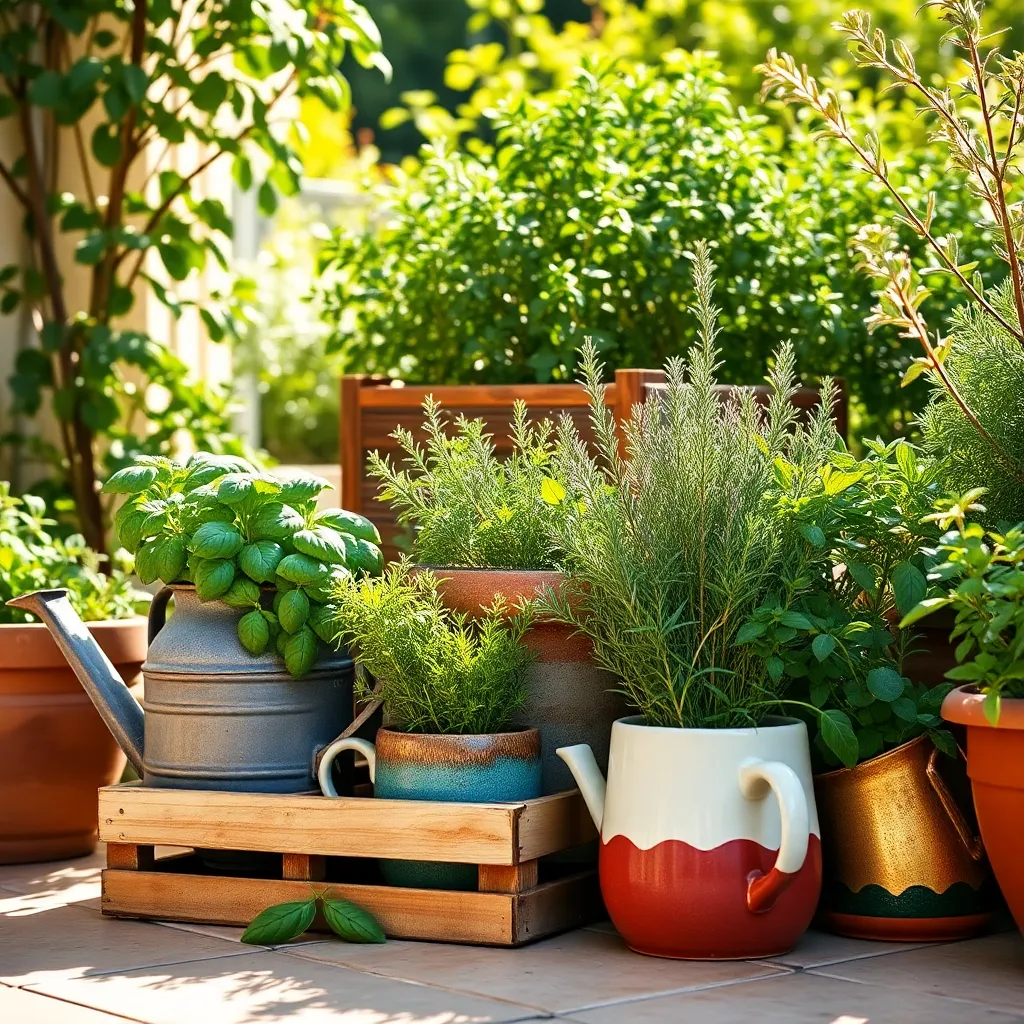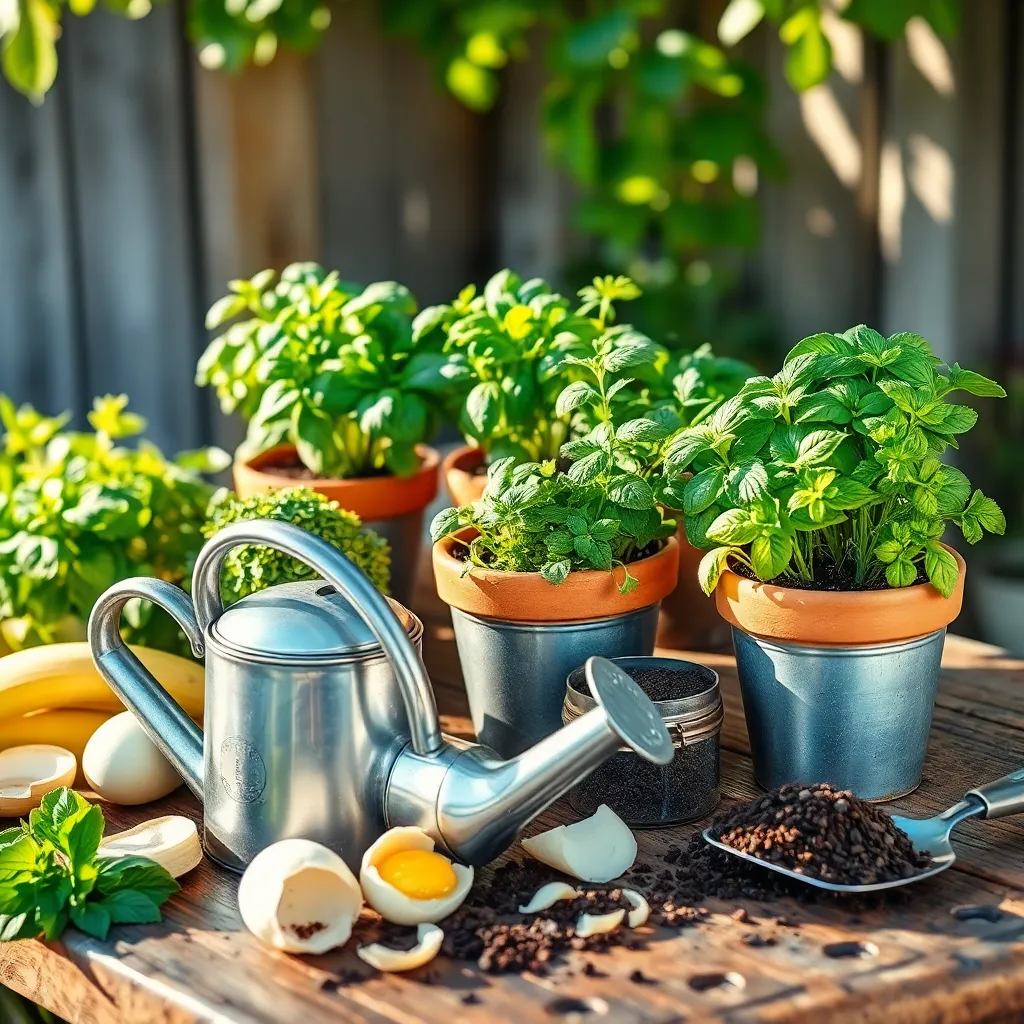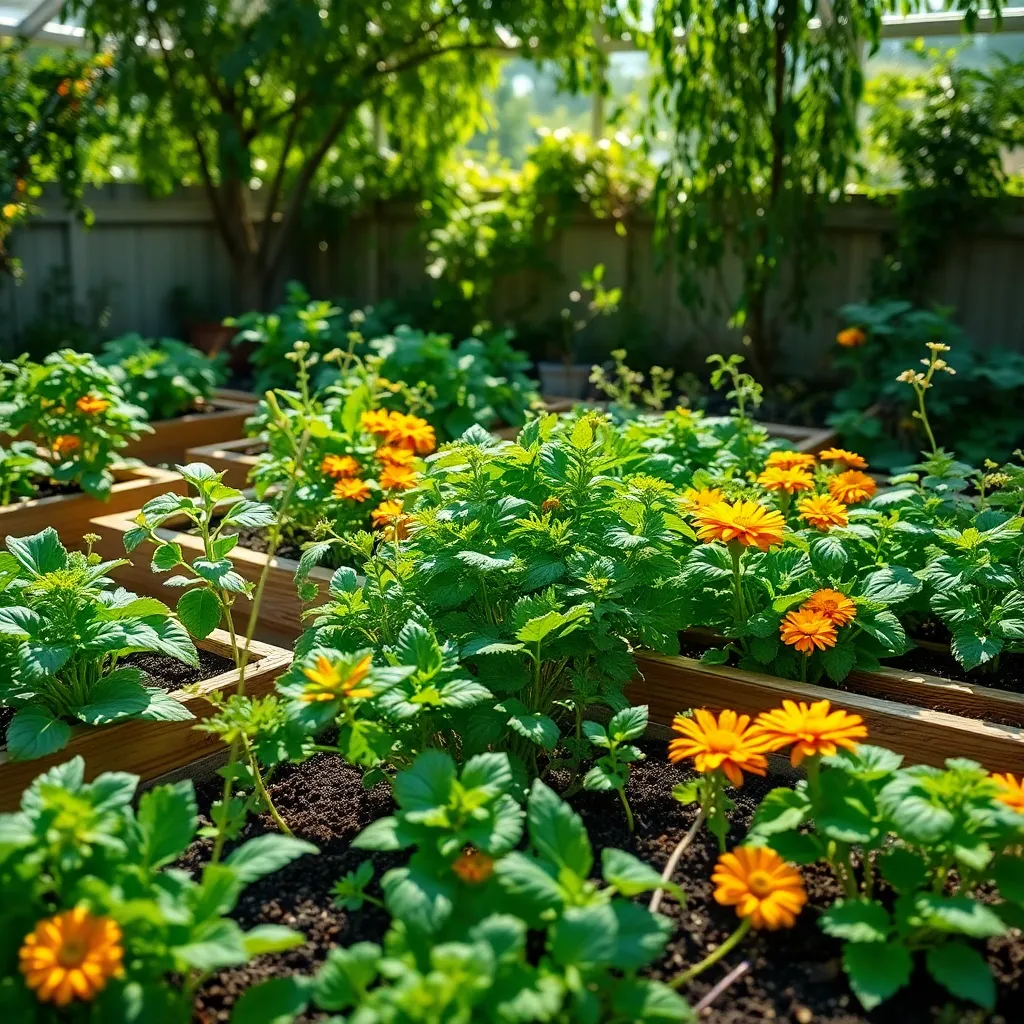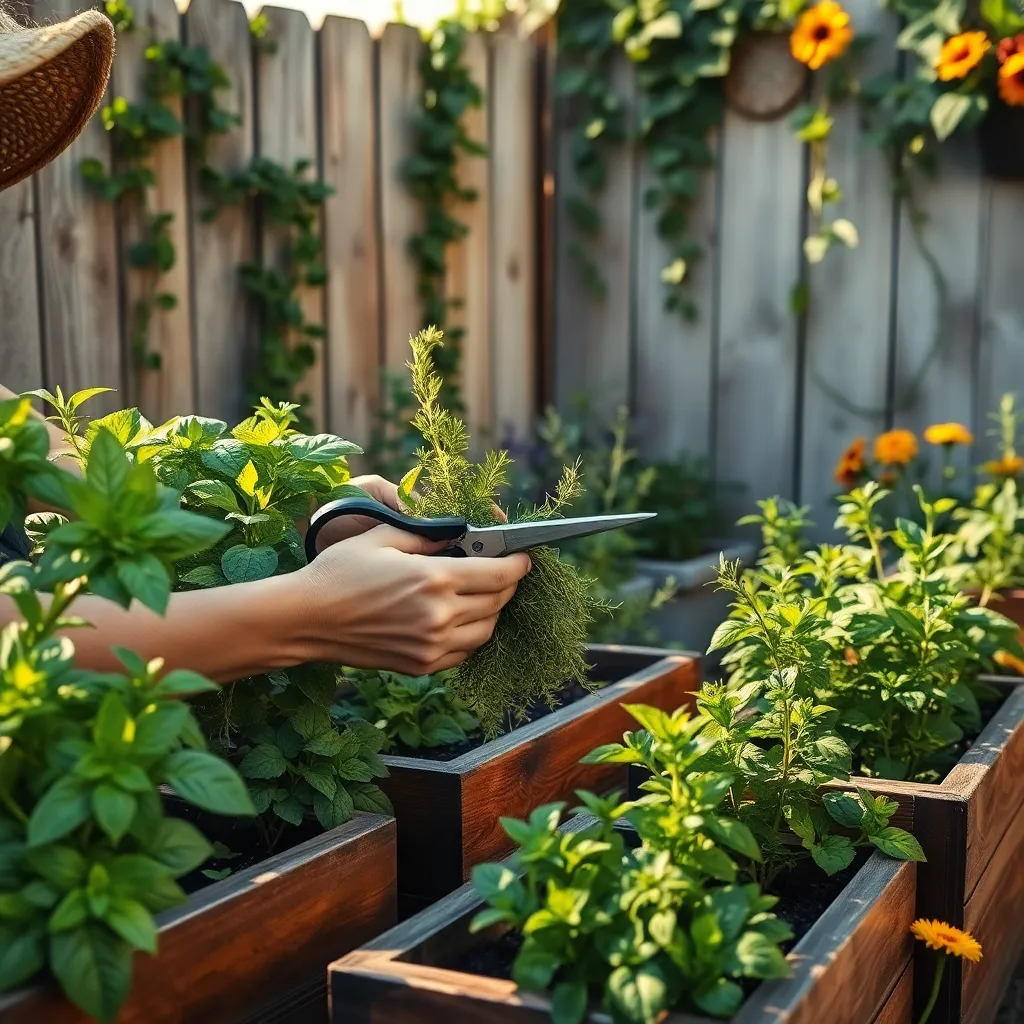Herb gardening is a delightful journey that brings vibrant flavors and fragrant aromas right to your doorstep, whether you’re a first-time gardener or a seasoned green thumb. With “Affordable Herb Gardening Tips,” you’ll discover a treasure trove of savvy suggestions that transform any space, big or small, into a lush, aromatic haven without breaking the bank.
Imagine stepping into your garden and picking fresh basil for your pasta or mint for your tea, knowing you cultivated these culinary delights yourself. By exploring this guide, you’ll unlock the secrets to creating a thriving herb garden that rewards you with both practical benefits and the simple joys of nurturing life from soil to table. From money-saving hacks to soil savvy insights, the pages ahead promise to equip you with confidence and creativity, ensuring your herb gardening endeavors are not only successful but truly enjoyable.
Reuse Containers for Herb Pots

Repurposing containers for herb pots is a sustainable and cost-effective approach to gardening. Look around your home for unused items such as old teapots, coffee cans, or glass jars that can serve as charming herb planters.
Before planting, ensure your chosen container has proper drainage to prevent waterlogging. Drill or punch small holes in the bottom of non-porous materials like metal or plastic to allow excess water to escape.
For the best results, fill your containers with a rich, well-draining potting mix designed for herbs. Mix in some perlite or sand to enhance drainage and mimic the natural conditions herbs prefer.
Regular watering is crucial, especially for small containers, as they tend to dry out faster. Aim to keep the soil consistently moist but not soggy, adjusting your watering schedule based on the season and your climate.
Place your herb pots in a location where they can receive at least 6 hours of sunlight daily. For urban gardeners, a sunny windowsill or a balcony spot works perfectly to ensure your herbs thrive.
As your herbs grow, pinch back the tips regularly to encourage bushier growth and prevent them from becoming leggy. Harvesting frequently not only provides you with fresh herbs but also promotes healthier, more vigorous plants.
Start Herbs from Seed Indoors

Starting herbs from seed indoors is a cost-effective way to kickstart your herb garden. Begin by selecting seeds from reliable sources, ensuring they are fresh for the best germination results.
Use seed-starting trays or small pots filled with a light, well-draining seed-starting mix. Avoid garden soil, as it might compact and hinder seedling growth.
It’s important to keep the soil consistently moist but not waterlogged, which can cause root rot. A gentle misting with a spray bottle is ideal for maintaining moisture levels.
Most herb seeds require warmth to germinate, so place your trays on a heat mat or a warm windowsill. Ensure they receive at least 6-8 hours of light daily; supplementing with grow lights can be beneficial during shorter days.
Once seedlings sprout, thin them out to prevent overcrowding and encourage strong growth. Keep an eye out for any signs of disease or pests, and address issues promptly to ensure healthy development.
Utilize Kitchen Scraps as Fertilizer

Kitchen scraps can be a fantastic resource for enriching your herb garden soil. Instead of throwing away vegetable peels, eggshells, or coffee grounds, use them to create a nutrient-rich fertilizer.
To begin, collect your vegetable and fruit scraps in a compost bin. Over time, these scraps will decompose, creating a rich compost that can be added directly to the soil.
Eggshells are particularly useful as they add calcium to your soil, which is essential for strong cell wall development in plants. Simply crush the eggshells and sprinkle them around the base of your herbs for slow-release nutrition.
Moreover, coffee grounds can be used to improve soil structure and provide nitrogen. Sprinkle used coffee grounds sparingly on the soil surface or mix them into your compost pile to avoid soil acidity imbalances.
Advanced gardeners can explore vermicomposting, which uses worms to break down kitchen scraps into a highly concentrated form of compost. This method is efficient and can be done in small spaces, making it ideal for urban herb gardeners.
Practice Companion Planting Techniques

Companion planting is a technique that involves growing certain plants together to enhance growth, repel pests, or improve flavor. For example, planting basil next to tomatoes can help repel insects and enhance tomato flavor, making your herb garden more productive.
Incorporating companion planting can save space and resources, which is ideal for an affordable herb garden. Herbs like chives and dill can be planted together, as chives repel aphids, helping to protect dill and other neighboring plants.
When practicing companion planting, consider the soil and light requirements of the herbs you’re pairing. Most herbs, such as rosemary and thyme, prefer well-drained soil and full sun, so matching plants with similar needs will ensure they thrive together.
Advanced gardeners can experiment with less common pairings to optimize their garden’s ecosystem. For instance, pairing cilantro with spinach can provide mutual benefits, as cilantro’s natural oils deter harmful insects that might otherwise target spinach.
Harvest Regularly to Promote Growth

Regular harvesting of herbs encourages continuous growth and prevents plants from becoming leggy or woody. By frequently snipping leaves, you stimulate the plant to produce more foliage, which is especially crucial for herbs like basil and mint.
Begin by using clean, sharp scissors to cut the stems just above a leaf node, which will encourage branching and fuller growth. For beginners, it’s important to know that regular harvesting can also deter flowering, ensuring the plant’s energy is directed towards leaf production rather than seed formation.
For more advanced gardeners, consider timing your harvests during the early morning when essential oils are at their peak, resulting in more flavorful herbs. This practice not only enhances taste but can also extend the shelf life of your harvested herbs.
Remember to avoid removing more than one-third of the plant at any given time to prevent stress. Consistent but moderate trimming will keep your herb garden thriving and productive throughout the season.
Conclusion: Growing Success with These Plants
As we wrap up our journey through the world of affordable herb gardening, we’ve uncovered five key relationship concepts that extend beyond the soil. First, communication is key, much like understanding the needs of different herbs. Second, patience nurtures growth, both in gardens and relationships. Third, shared goals, like planning your herb garden together, strengthen bonds. Fourth, adaptability encourages resilience, whether in changing seasons or relationship dynamics. Lastly, celebrating small victories, such as a thriving basil plant or a meaningful conversation, fosters positivity and growth.
Now, take a moment to discuss with your partner which herb you’d like to plant together and set a date for this bonding activity. It’s a simple yet profound step in nurturing both your garden and your relationship.
Remember to bookmark this article as your go-to guide for cultivating both your green thumb and your relational harmony. By integrating these insights into your life, you are sowing the seeds for a flourishing future. Together, let’s cultivate relationships that are as vibrant and enduring as the lush gardens we aspire to grow. Your journey toward relationship success starts with the first seed you plant today.
